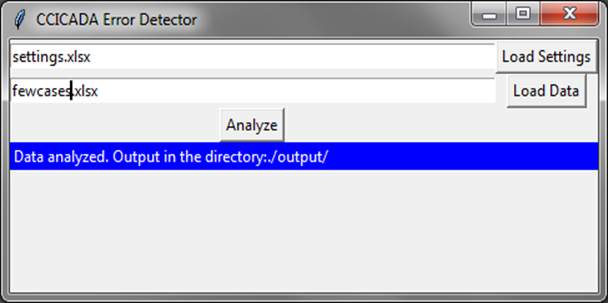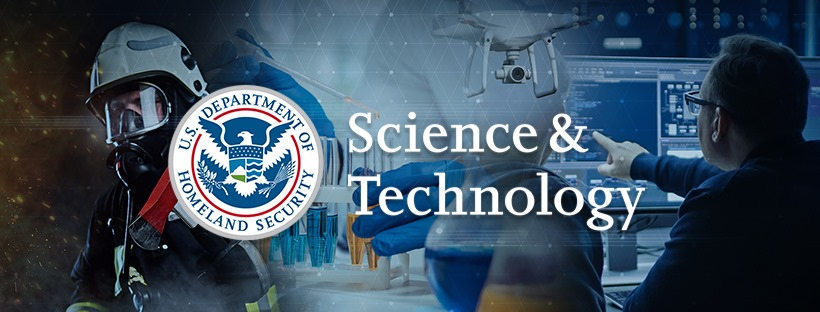Data Integrity Project
US Coast Guard, 2015-2016

Summary
The Data Integrity Project was a multi-year effort undertaken by the Rutgers-based research group CCICADA, a Department of Homeland Security Center of Excellence. This research effort was organized by CCICADA Director Dr. Fred Roberts, while I served as primary investigator, first author, and lead developer. I oversaw a team of five that brought a research-based approach to develop and deploy a number of tools and recommendations that provided a direct course of action our client could implement in support of ongoing efforts to maintain data integrity. The team relied upon a mixed-method approach to investigate quantitatively the technical systems that store and deliver the data, and also qualitatively the human systems that enter, use, and interpret that information.
Background
Like all modern enterprises, the US Coast Guard relies upon data to inform its decision making. Previously, US Coast Guard had engaged Rutgers to aid in its data-driven decision making. For instance, the question of how, where, and when to most efficiently allocate the Coast Guard’s sea-borne resources had been addressed using big data technologies developed by our research team.
During this process, US Coast Guard expressed a desire to ensure that the data they provided us and that we used in our models was as reliable as possible. After all, US Coast Guard faces data challenges that most enterprises can’t imagine (ever try to update a database during 20-foot swells?). Further, the stakes are high for the integrity of that data: it is used as evidence during criminal prosecutions, and influences this country’s national security posture.
Outcomes
- Reviewed and analyzed the extant research on data integrity using a multidisciplinary approach, relying upon both technical and human-centered research to direct our efforts
- A comprehensive review of existing US Coast Guard data systems
- Worked closely with partners at US Coast Guard in Washington, in addition to several contractors, tasked with developing their data systems
- Reviewed existing documentation and guidance
- Evaluated existing data using purpose-built software
- A comprehensive review of US Coast Guard human data systems
- Explored data-entry tasks first-hand
- Interviewed and observed those responsible for data maintenance
- Evaluated needs of US Coast Guard analysts, and how data can server them better
- Delivered a set of research-based insights and guidance that provide a roadmap for data integrity.
- Recommendations for the maintenance of technical data integrity systems, including software tools – which I developed – to be used in concert with existing data systems
- Recommendations for the human processes responsible for the entry and maintenance of data systems
- Collaborative workshop efforts with the analysis team at US Coast Guard Headquarters that use and interpret the data
My Role
Primary researcher, first author, lead developer.

Sample Deliverables

A review of extant academic literature helped establish heuristics for data integrity.

A variety of data integrity techniques were reviewed and implemented.

I developed software that used several techniques to aid in automatic error detection.
SAFETY Act Project
Department of Homeland Security, 2011-2015
My Role
Researcher, contributor, interviewer, workshop facilitator
Work product
Best Practices in Stadium Security
Perks of the job
In order to ensure the external validity of our findings, much of our field research (ahem) took place during live events. It was fun, but all the football going on sometimes got in the way of diligent data collection.

Summary
In support of an act of Congress, the SAFETY Act Project was a long-term research effort that provided research, guidance, and evaluation to both the US Department of Homeland Security Science and Technology Directorate and operators of large venues to make safe those venues from terrorist attack and other emergencies. The Rutgers team was organized and lead by CCICADA Director Dr. Fred Roberts; I served as a researcher and author on the team.
Background
After the terrorist attacks of 9/11, Congress passed a series laws aimed at improving this country’s response to, and resilience from, terrorist attacks and other emergencies. One of these laws was the SAFETY Act, which provides incentives to operators of large venues to improve their facilities and procedures to be more resilient against crises.
Transit hubs, sports stadiums, and other large venues have historically been targets for terrorist attack; 9/11 demonstrated that American facilities were ill-equipped to adequately respond. Infamously, the staircases in the World Trade Centers were not wide enough to allow for both the ingress of heavily-laden firefighters and the simultaneous egress of panicked building occupants – leading to traffic jams that cost the lives of thousands.
The team’s goal was to research and identify a set of metrics, qualifications, and procedures that large venue operators can use to evaluate their performance in establishing resistance and reaction to emergency situations. These metrics and qualifications would serve as the benchmark for “SAFETY Act certification,” whereby those venues would qualify for the incentives and protections the law provided.
Outcomes
- In collaboration with large-venue operators, directly observed, measured, and analyzed security procedures
- Measured throughput efficiency of screening, contraband secured, bottlenecks and organization, incidents and arrests, and many other factors during NFL, MLB, NBA, and NHL events
- Observed, interviewed, and interfaced with security professionals, law enforcement, and emergency response teams at venues during live events
- Toured and evaluated facilities, procedures, and response capabilities of dozens of major sports, transportation, and entertainment venues across the nation
- In collaboration with subject-matter experts, catalogued, summarized, and systematized recommendations into a procedure that US large venue operators can implement
- Interfaced with large venue security professionals to determine needs and opportunities
- Includes interviews, workshops, and conferences organized at Rutgers that attracted hundreds of large-venue security professionals
- Involved representatives from all major sports leagues, college sports, and others responsible for large venues
- Interviewed security professionals around the globe
- While 9/11 marked a major change in this country’s perspective, security professionals in Europe and Asia had been dealing with attacks and emergencies at large venues for many decades previous.
- We interviewed dozens of large-venue security professionals from across the globe.
- Interfaced with large venue security professionals to determine needs and opportunities
- Produced a report outlining best practices in large-venue security delivered by DHS to all such operators in the US
- Produced a set of metrics used in evaluation of large venues to determine qualification for SAFETY Act incentives
- Executed a series of conferences and workshops that security professionals might learn from, inform, and collaborate with our work.